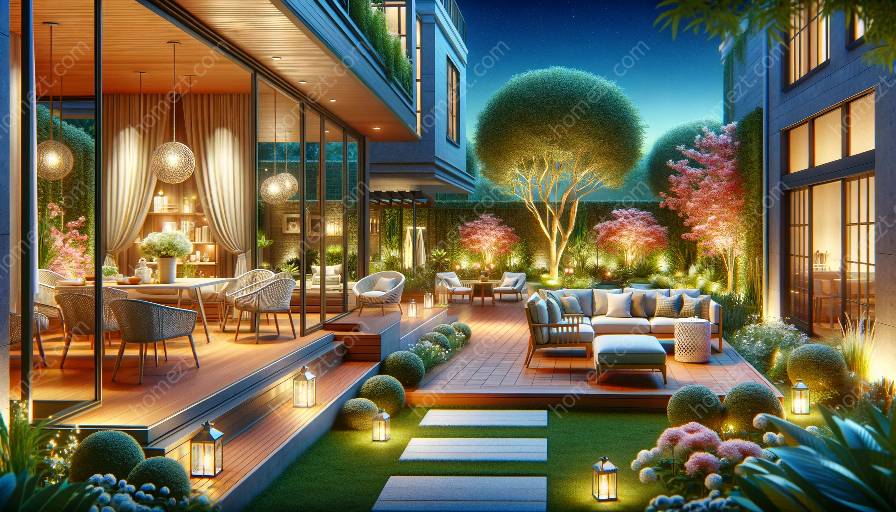When it comes to outdoor living spaces and garden design, the psychological effects of garden design elements play a crucial role in creating spaces that are not only aesthetically pleasing but also promote overall well-being. This topic cluster explores the relationships between garden design elements, outdoor living spaces, and interior design, highlighting their impact on emotional and psychological experiences.
The Impact of Nature on Well-Being
Before delving into the psychological effects of garden design elements, it's important to understand the broader impact of nature on human well-being. Research has consistently shown that exposure to natural elements, such as greenery and natural light, can have a positive effect on mental health and overall well-being. Nature has the power to reduce stress, improve mood, and promote relaxation, making it an essential consideration in both outdoor and interior design.
Biophilia and Connection to Nature
The concept of biophilia, introduced by psychologist Edward O. Wilson, emphasizes the innate human connection to nature. This connection is deeply rooted in our evolutionary history and has a profound impact on our emotional and psychological states. Incorporating elements of nature into design, including gardens and natural landscapes, can evoke feelings of tranquility, connection, and rejuvenation.
Psychological Effects of Garden Design Elements
Color Psychology
Color psychology plays a significant role in garden design, as different colors can evoke distinct emotional responses. For example, warm colors like red and orange can create a sense of energy and stimulation, while cool colors like blue and green often evoke feelings of calmness and relaxation. Understanding the psychological effects of various colors allows designers to create outdoor living spaces that cater to different emotional needs and preferences.
Sensory Stimulation
Garden design elements can provide diverse sensory experiences, from the visual appeal of flowers and plants to the soothing sounds of water features. These sensory stimuli can evoke positive emotional responses, such as joy, tranquility, and mindfulness. Incorporating elements that engage the senses can enhance the overall experience of outdoor living spaces and contribute to a more holistic approach to well-being.
Biophilic Design Principles
Biophilic design principles promote the integration of natural elements into built environments to support human health and well-being. By incorporating natural materials, patterns, and forms, designers can create spaces that foster a strong connection to nature, promoting psychological restoration and stress reduction. Gardens that adhere to biophilic design principles can contribute to a sense of comfort and harmony within outdoor living spaces.
Integration with Interior Design and Styling
The psychological effects of garden design elements extend beyond outdoor spaces and can significantly influence interior design and styling. Bringing elements of nature indoors, such as potted plants, natural materials, and natural light, can create a seamless transition between outdoor and indoor environments. This integration offers continuity in the experience of nature, contributing to a sense of cohesiveness and well-being.
Biophilic Interiors
Biophilic interior design emphasizes the use of natural elements to create spaces that mimic natural environments and evoke feelings of connection to nature. By incorporating vegetation, natural light, and organic materials, interior spaces can promote emotional well-being and cognitive restoration. The harmonious blend of nature with interior design elements can contribute to a balanced and psychologically supportive environment.
Enhancing Emotional Responses
Strategic placement of garden-based elements within interior spaces can enhance emotional responses and overall comfort. For instance, incorporating views of gardens and natural landscapes within interior design can create a sense of spaciousness and tranquility. This approach aligns with the principles of biophilic design, promoting emotional well-being by fostering a strong connection to nature.
Conclusion
The psychological effects of garden design elements are integral to the creation of outdoor living spaces and can significantly impact interior design and styling. Understanding the emotional and psychological responses to nature, colors, and sensory stimuli allows designers to craft environments that promote well-being and support a deeper connection to the natural world. By embracing biophilic design principles and integrating nature into both outdoor and interior spaces, designers can enhance the overall quality of human experiences and contribute to a more harmonious relationship between individuals and their environments.


























